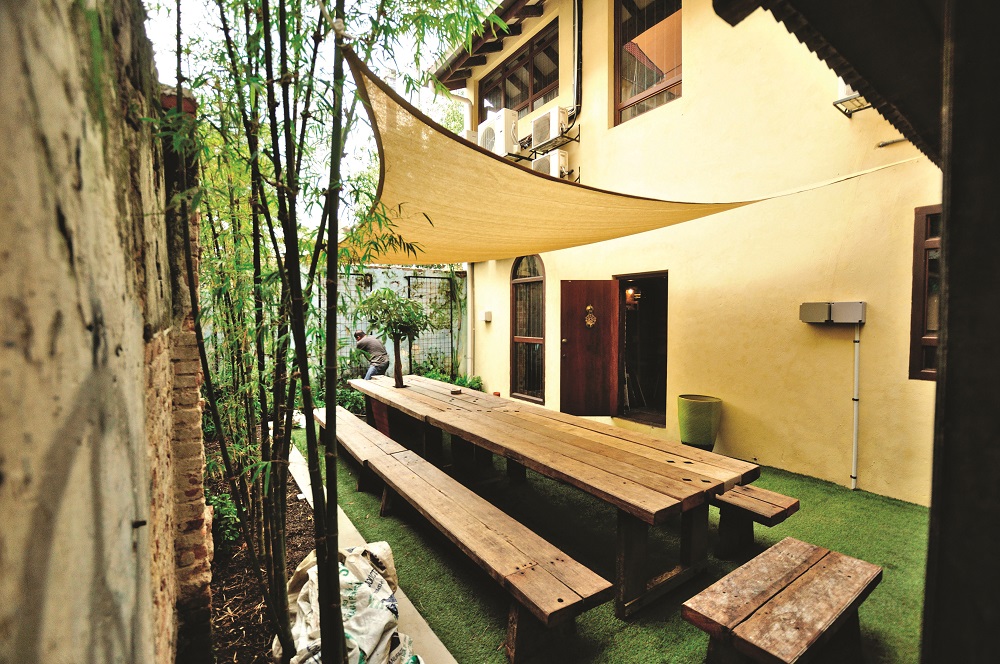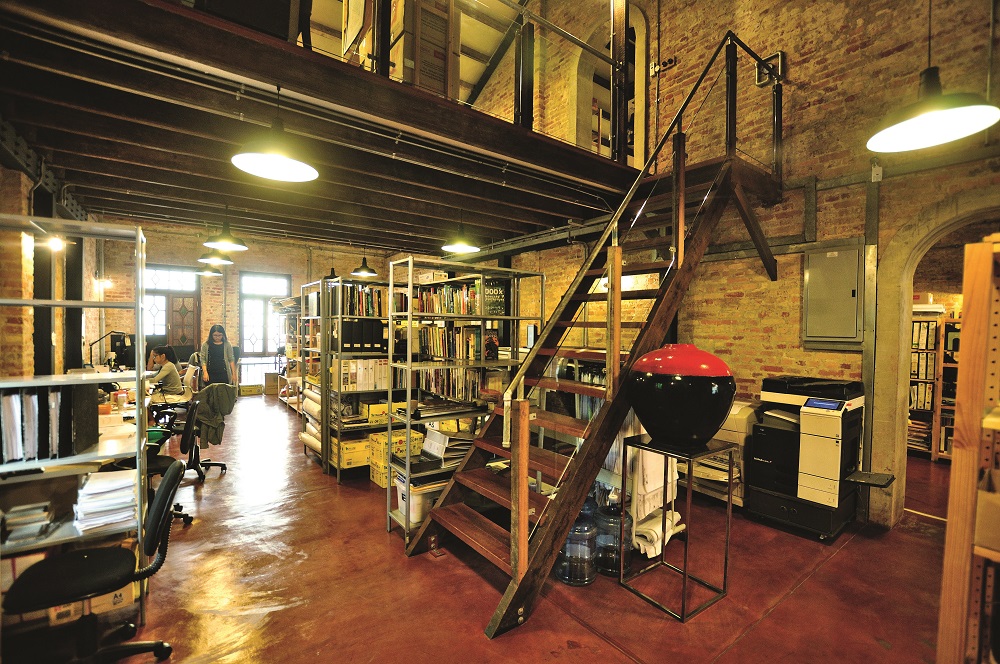| Creating Pentago House | ||
|
Decaying both inside and out, the two and a half story row house in Kampung Attap attracted little attention to those passing by. Sure, developers had noticed the potential of its location, in fact plans were already approved for a 12-story building, the likes of which dot Kuala Lumpur.
Fortunately, this humble building, which traces its roots to one of the city’s founding fathers and most influential philanthropists, had also garnered the attention of a local street artist. The corner location and long plastered brick wall was perfect for the artist’s creativity and it was that burst of color and style that captured Gregory Dall’s attention.
“I happened to park my car nearby and at first I just loved the street art but as I looked at the building I realized how much character it had,” said Dall, managing director of the Pentago Group, a boutique architecture and landscape firm. Dall shared the amazing story of his organization’s new headquarters, affectionately called Pentago House, at a special June MCGKL event. |
||
.jpg) |
.jpg) |
.jpg) |
|
The project, completed two years ago, not only benefits Dall’s firm but also all those who value the history of Kuala Lumpur and who wish to enjoy the architectural beauty and character of its past.
As is all too familiar a story in Kuala Lumpur, this renovation almost never happened.
Aside from the serendipity of Dall’s discovery of the building, the downtrodden building also benefitted from the tenacity of Pentago Group’s principals. Locating the owner of the building in Singapore and negotiating its sale took more than six months of persistence. Convincing the DBKL that restoration was a better use than the construction of the previously approved 12-story building was another challenger as was convincing the firm’s accountants.
“Our accountants tried to talk us out of it. Financially, the right advice was to build a 12-story office building, keep the top two floors for ourselves and make lots of money,” said Dall. Add in the fact that Pentago Group had never tackled a renovation and restoration project and you can see the deck was stacked against the project.
In the end, the project was more than even Dall had originally foreseen as the building was essentially stripped to its barest bones before its exterior was reinforced and its interior was completely restored. In fact, the bricks of the exterior walls are the only things kept in position though even those needed to be repointed. |
||
 |
.jpg) |
.jpg) |
|
The project was careful to tread as lightly as possible however, with any and all salvageable materials kept and reused inside the building. The original shutters for instance no longer adorn the windows but have been repurposed inside as part of the interior ceilings; plumbing pipes became stair rails; and the second floor flooring was made from the building’s old roof beams. |
||
.jpg) |
.jpg) |
 |
|
“It has a soul,” says Dall of Pentago House which incorporates not only the firm’s business offices but also a coffeehouse and a living room complete with Play station, karaoke and foosball for the employees. “Pentago House has become a home.”
Pentago House’s history dates back to 1912 when Loke Yew, one of Kuala Lumpur’s founding fathers and in his time the richest man in British Malaya. It should also be noted that Loke was a generous philanthropist who built temples and orphanages across the city but the 1912 project in Kampung Attap was a business one.
Recognizing the potential of the area, Loke applied for permission to construct 21 shop houses along the area known simply as Lot 13. Pentago House, owned by one of Loke’s own sons for nearly 40 years, now represents the last of those 21 shop houses as the others have yielded to redevelopment.
Pressure for many of those buildings to again be redeveloped remains but Pentago House’s influence is already being felt in the community.
Those who visit the area often stop in and ask if the shop house, once noticed first as a canvas for street art, is in fact a gallery or museum. Photo shoots are often conducted on the sidewalk outside and the building has been featured in several area publications.
A nearby four-story building was slated for demolition but now has been turned into an office space and incubator of sorts for startup businesses while a trendy coffeehouse is coming in across the street, says Dall.
“This street was a dead street, now it is coming alive,” says Dall, of the area before the restoration. “Hopefully (Pentago House) will encourage others to do the same.”
For more information about the Pentago House project, visit Pentago’s web site at www.pentago.com.my where a wonderful video and 3-D tour of the building project can be found. A more extensive article about the project can be found here.
Bryan Morytko |
||




